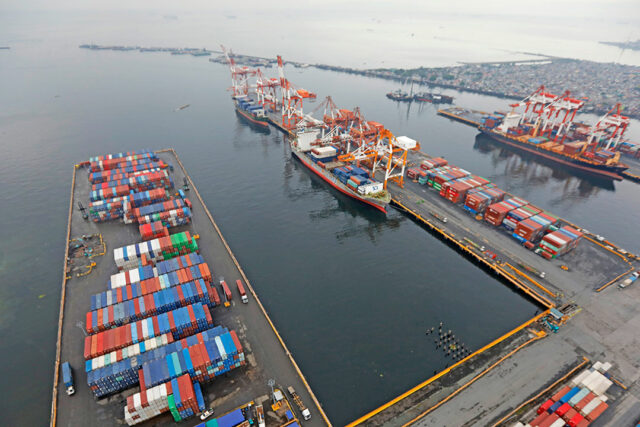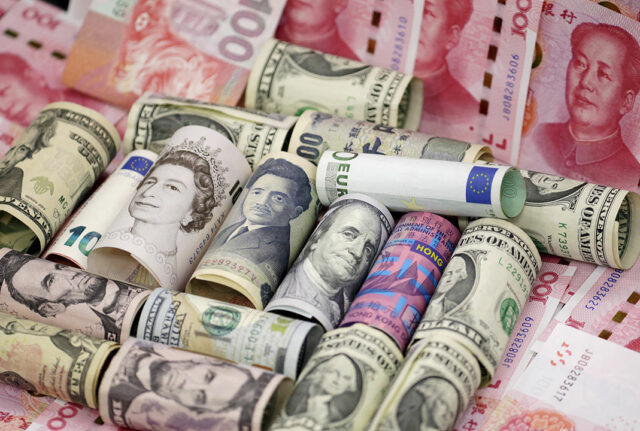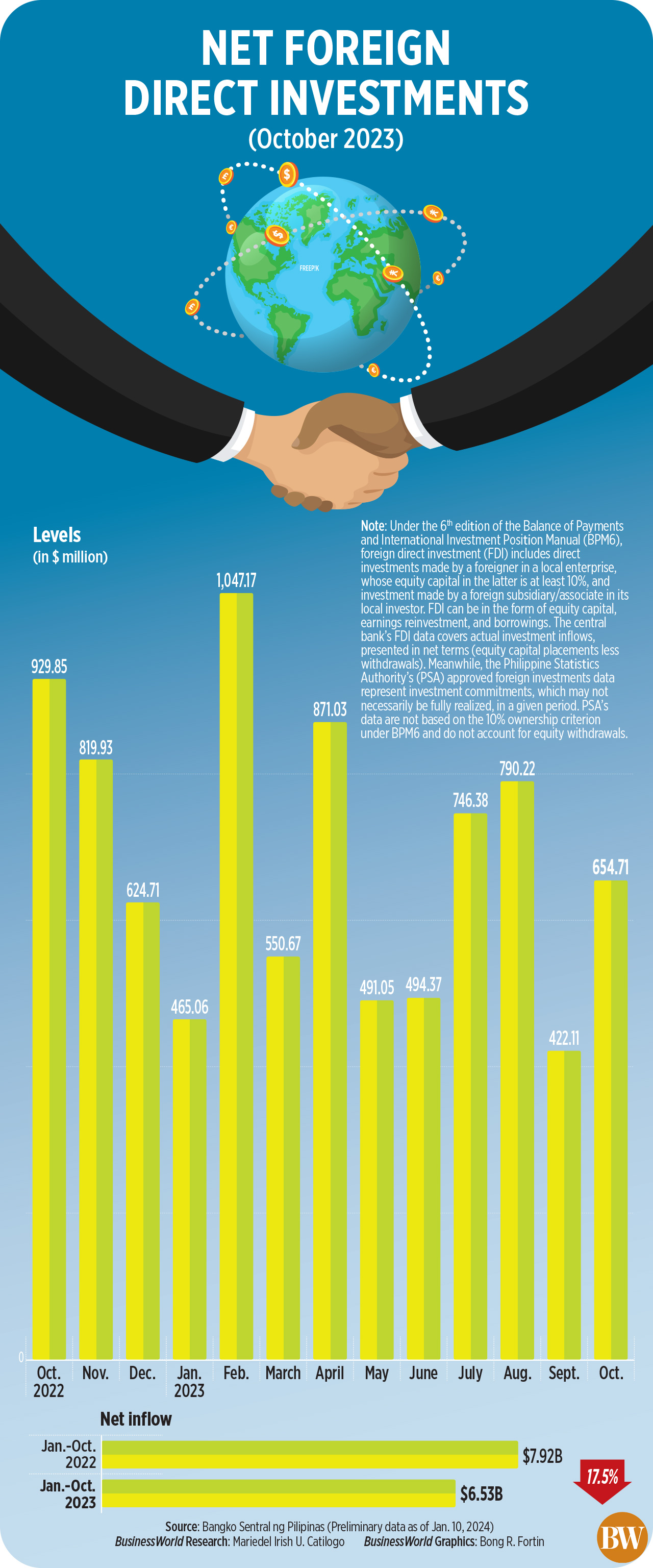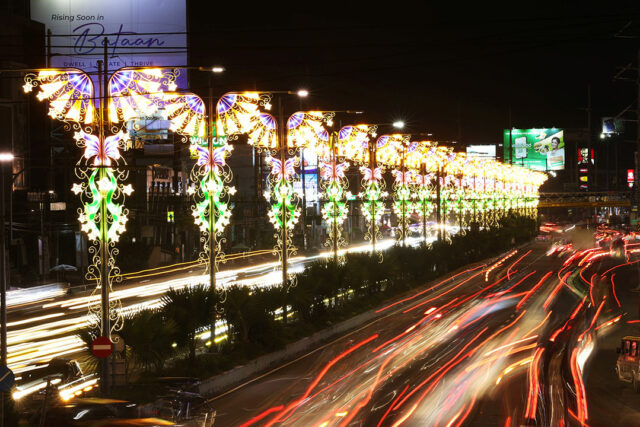THERE’S good news for diners who don’t like to share: Those tapas-size plates loaded with mini bruschettas and spicy tuna-topped crispy rice are out. Individual portions are in this year.
That’s one of the top trends emerging in new restaurants across London and New York (NY). Another: When you order a drink, be prepared for bartenders to turn up the heat, literally.
The culinary capitals on either side of the Atlantic aren’t always in sync. Last year, new places in New York specialized in world-class noodles, from pasta to soba, and destination pizza spots expanded to prime locations. In London, the trend was to elevate classic dishes including snails, roast chicken and ice cream, and Caribbean restaurants and bars shone bright.
But this year, the restaurant stars aligned, and the top trends in the two cities have notable similarities. Among them is seafood, especially places where the buzzword isn’t “fresh” but “aged.” Another is the proliferation of wine bars. The concept makes sense for operators whether their places are small vino-focused spots or a counter at a restaurant — because you don’t need an expensive kitchen setup to make the drinkers happy.
Will devout drinks enthusiasts be ordering the hot Negroni at Jimmy in New York and the hot martini at the Ham Yard Hotel in London? These libations might be hard to avoid — as are these other food and drink trends you’ll see in New York and London in 2024.
SO LONG, SMALL PLATES
Small plates have taken up space on restaurant tables for years, offering diners the chance to turn a meal into a cocktail party as they share bowls of greasy Padrón peppers and a couple of fried arancini balls. Now chefs are cutting out the menus’ snack sections and giving customers more straightforward options of first courses and main dishes that don’t require an awkward negotiation over the last bite.
Among the new London spots where you can eat like a grown-up is Wolseley City, where the menu is essentially divided into single serving starters (goats curd tart and smoked mackerel salad) and mains. At the art deco palace Bébé Bob, there’s no room in the middle of the table for sharing platters. Instead, guests have starters like prawn cocktail, and the signature rotisserie chicken is plated by servers tableside. Star chef Tom Sellers has also had enough of small plates: His recently opened Dovetale eschews dishes that are passed around.
In New York, chef Angie Mar has flipped her buttoned-up French tasting-menu spot Les Trois Chevaux into the slightly more relaxed, à la carte affair, Le B. Among the dishes that aren’t made to be shared: one whole deviled egg, flecked with black truffle, and Bird’s Nest soup, the nucleus of which is a slice of foie gras with bok choy in a game bird consommé.
At the grand new Café Carmellini, chef Andrew Carmellini is also focused on first and second courses and entrées. One could kick off a meal with a delicate, three-tiered stack of crab mille-feuille before moving to a pasta course of five duck-filled tortellini in foie gras sauce, then ending with squab en croûte.
REGIONAL OPEN-FIRE COOKING HEATS UP
Cooking over fire has been a longtime obsession of chefs. Credit goes to Patagonia’s Francis Mallmann, who in the early 1990s made flame cooking the sexiest way to serve meat. (And, more recently, vegetables.)
The trend is burning brightly, so to speak, at new places where the grills have a regional accent. In London, chef Tomos Parry and his protégés have opened restaurants around town featuring open fires, building on the success of his Basque-focused Brat. At his new place, Mountain, Mr. Perry puts a lot of the menu on the grill, from langoustines and John Dory to ribs of Jersey sirloin beef and the signature lobster caldereta casserole. Ben Allen, a Brat alum, has recently started serving a Sunday roast cooked over flames at the Parakeet, the fire-minded pub that he opened last spring.
At the Devonshire in Piccadilly, the buzzy pub’s custom-made grill employs embers that come from a wood fire to cook the aged British meat.
Over in the US, open fire is the main focus of the popular new Ilis in Brooklyn. Danish chef Mads Refslund had to wait 18 months to receive approval from the New York City Fire Department for his hearth-centered restaurant because of its tricked-out custom grill. It’s worth the effort, because many dishes are prepped over that grill, including brown trout that’s been bundled in grape leaves and birch wood and Refslund’s signature barbecued eels, inspired by ones he ate as a child, cooked over a mix of wood sourced from upstate New York.
When acclaimed New York chef Ignacio Mattos (of Estela) opens the 750-square-foot Amado Grill in downtown’s Nine Orchard hotel later this year, his $125 set menu will highlight simple, elegant dishes prepared over charcoal, such as quince-accented squab à l’orange.
SEAFOOD GETS OLDER
Chefs are employing more specialized techniques on seafood this year — especially dry aging, a practice usually confined to high-end sushi spots.
Later this year, chef-owner Tomer Blechman of Brooklyn’s Mediterranean staple Miss Ada will open Theodora, focused on dry-aged fish. Blechman ages local seafood for up to a week, controlling humidity and temperature. Among the dishes he plans to serve are a salmon belly that’s been aged three days and laced with lovage cream .
The first winner of Top Chef, Harold Dieterle, also sees the appeal of rested fish for his upcoming southern Italian restaurant, Il Totano, in Greenwich Village. In the center of the dining room is a temperature- and humidity-controlled fridge. Beyond the flavor-enhancing benefits, Dieterle notes that dry-aged fish is easier to cook: “It comes out moist every time.” His branzino in tuna collar sauce will be aged for a few days, he says, while bluefin tonatto vitello will mature for around two weeks. And at the popular, six-month-old Foxface Natural in the East Village, chef David Santos recently unveiled bluefin tuna crudo in a smoked chive oil. He ages the fish for around three weeks, one of those weeks in soy sauce, all to amp up its umami flavor.
In London, the innovative the Sea, the Sea has been pushing aged fish at its Hackney counter since it opened two years ago. Now, chef Leandro Carreira has turned his attention to shellfish, including line-caught squid that he keeps for almost a week, sometimes coated in beeswax to maximize the subtle sweetness. He’s also started aging scallops and cuttlefish. At Humo in Mayfair, where the South American-minded dishes are cooked on a four-meter (13 foot) grill, chef Miller Prada is serving 10-day aged yellowtail with citrus sauce, 11-day aged turbot with mole sauce, and 12-day aged wild Cornish monkfish with almond emulsion.
THE UBIQUITOUS WINE BAR
This will be a good year to be in the wine-glass business in London. A seemingly endless and exciting list of wine bars and wine-focused restaurants are opening their doors in the next few months. Coming soon to Borough Market: Camille, from Clare Lattin and Tom Hill, the team behind the popular natural wine bar Ducksoup. It will focus on small, French producers to accompany the Borough Market-driven menu.
July on Charlotte Street will also specialize in natural French vins that will complement the Alsatian-centered menu from chef Holly Hayes, an alum of the iconic wine spot 40 Maltby Street. Even the city’s notable new restaurants increasingly look like wine bars. When star chef Claude Bosi opens Josephine in a few weeks in Chelsea, he’ll adopt the bouchon wine program of his native Lyon, serving white and red by the meter so you pay for what you drink. The upcoming Morchella in East London will have a dedicated wine bar spotlighting the kind of rising-star producers the owners are known for at their cult favorite restaurant Perilla.
Across the pond, New York is also welcoming an array of wine spots. A few months ago, chef Flynn McGarry relocated his popular low-intervention bottle boîte Gem Wine from Nolita to the more spacious home of his Lower East Side tasting menu spot, Gem. (He promises Gem will return in a new location in 2025.) Nearby, popular Spanish spot Ernesto’s is flipping the cafe space into a wine bar called Ernie’s. Some nights there could be pintxos (snacks) to go with glasses and bottles, while others will feature guest chefs for ever-changing, wine-focused dinners.
Chase Sinzer and chef Joshua Pinsky, meanwhile, are expanding the drinking options on East 10th Street. Their new endeavor, Penny, will debut this spring in the 1,400-square-foot space right above their wine-and-food spot, Claud. It will focus on minimalist seafood preparations and small production Champagnes and whites.
HOT COCKTAILS ARE HOT
The latest frontier for playful bartenders is drink temperatures.
Jimmy, the splashy rooftop bar in SoHo in New York, has started serving Midnight Negronis, a comforting cold-weather variation of the Italian classic with gin, Campari, sweet vermouth and blood-orange spiced syrup that’s topped with steaming hot chamomile tea. “It was a hit from the first day,” says bar manager Sayora Khamidova, who created the hot Negroni to keep customers warm on colder al fresco nights. “Guests get a kick out of the fact that this traditionally icy cold and bracing cocktail is unexpectedly hot and soothing,” she says.
An even bolder innovation is the hot-and-cold toddy at Shinji’s in the Flatiron: This drink is a Johnny Walker Black-infused chamomile and ginger punch that’s served simultaneously hot and cold in a tea cup; a divider initially keeps the two sides separate.
At this season’s Winter Martini Garden at the Ham Yard Hotel in London, hot drinks rule the classic cocktail list. The Beekeeper’s Martini is a warm version of the gin-and-honey Bee’s Knees; it’s finished with a puff of smoke, courtesy of a bee smoker. Likewise, the Warm Charlie is a Charlie Chaplin (sloe gin, lime, apricot brandy) served hot, and the Paloma-tini is a heated-up offering of the gin-and-grapefruit classic, made with thyme syrup, too. — Bloomberg














